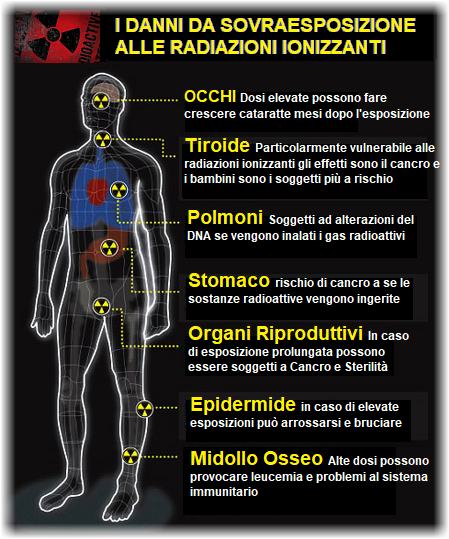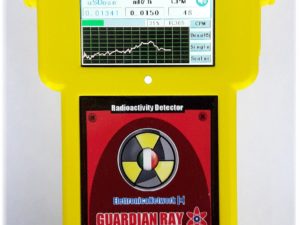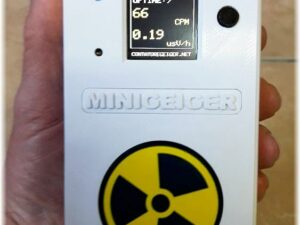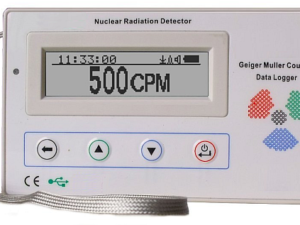Biological damage from ionizing radiation

Surveillance and monitoring of radiation levels are the responsibility of public health institutions, who must ensure that no one receives a dangerous dose of radiation. Humankind has always been exposed to various forms of natural radiation made up of cosmic rays and all radioactive elements present in nature. (gas Radon, Uranium, thorium, Radio, ecc. ecc.).
However, natural radiation levels are too weak to highlight the harmful effects of radiation, which did not become evident before the end of the 19th century when, following the discovery of X-rays by Roentgen and radioactivity by Bequerel, intense sources of radiation were available for experimentation.
In 1901 Bequerel showed an erythema of the skin which had occurred in the pocket of his suit in which he had kept for some time a glass vial containing Radium salts..
Pierre Curie later intentionally caused himself a radium rash on the skin of his arm, thinking that radiation could have therapeutic properties.
Indeed, many unfortunate people received injections of materials containing Radium and Thorium as a tonic, with the result that they were subsequently affected by serious forms of cancer..
In 1903 it was discovered that exposure to X-rays could even induce sterility in laboratory animals.
a few years later it was announced that embryos from toad eggs fertilized with sperm were first irradiated with X-rays, had some genetic abnormalities.
Subsequently, the first anemias and leukemias induced by X-rays were reported and already in 1902 it was found that a skin carcinoma had developed on a previous dermatitis resulting from long exposure to radiation.
Today we know with certainty that if certain exposure dose limit values are exceeded, Ionizing radiation can cause serious tissue damage and serious dysfunctions in the reproductive system and, in the most serious cases, lead to the death of the person..
In more detail regarding the health effects of radiation poisoning, the following is a description of the consequences found,
The 1 sievert dose may cause slight temporary changes in hemoglobin.
2 – 3 Sieverts are nauseating, hair loss, hemorrhages.
4 sieverts can lead to death.
Instead over 5-6 sieverts, survival becomes highly unlikely.
The Absorbed Dose and the Equivalent Dose
Ionizing radiation, they can be absorbed by matter in the form of an energy dose, which quantifies the energy transfer that actually occurred.
The effects can be irrelevant or even very harmful, obviously depending on the dose of radiation that has been absorbed, and the type of radiation.
An important physical phenomenon involves alpha particles, which are typically emitted by radioactive nuclides of heavy elements, like uranium isotopes, of thorium, of the radius, ecc., in an atomic process called alpha decay.
Often this decay leaves the nuclei in an excited state, by an excess of energy which can then be radiated with the emission of gamma rays. Then what happens is the emission of alpha particles, the emission of gamma rays often coincides, which indirectly reveal their presence.
Alpha rays, They are made up of 2 protons and 2 neutrons bonded together, in practice they are therefore 4He nuclei (elio). they have a significant electrical charge, which allows it to interact strongly with the surrounding matter.
They are considered unimportant for the purposes of their direct detection with the Geiger counter as they are easily absorbed by materials and in practice can only travel a few centimeters in the air, and can be absorbed and blocked by the outer layers of human skin,
Alpha rays are generally not life-threatening, unless the source itself is directly inhaled or ingested. In this case, the damage would be much greater than that caused by any other type of ionizing radiation, in fact, the exposure of the internal organs of the human body to a high dosage of these particles would certainly determine the typical symptoms of serious alpha radiation poisoning.
The unit of measurement of the dose absorbed by matter following exposure to ionizing radiation is the Gray (Gy). e il Sievert, (Sv), where 1Gy corresponds to an amount of energy of 1 Joule (J) absorbed by 1 kilogram of matter. The concept of equivalent dose expresses the doses of radiation absorbed by man understood as a biological organism, precisely measures the possible biological effects due to the absorbed radiation dose.
The Sievert is the unit of measurement of the equivalent dose of radiation in the International System and is a measure of the effects and damage caused by radiation on an organism. The equivalent dose has the same dimensions as the absorbed dose and takes into account the possible biological damage, at the same dose, respect the various types of ionizing radiation.
To give a concrete idea of the value of a Sievert, keep in mind that (in Italy) the average dose absorbed in a year due to exposure to natural radioactivity alone is calculated at approximately 3 thousandths of a Sievert (mSv).
The best Geiger counters made in Italy, True Italian excellence.

Guardian Ray Smart 2.8p Professional Geiger Counter with WiFi, Bluetooth, microSD, Touch Color LCD and Pancake probe.
€1.259,00Add to cart
Contatore Geiger MINIGEIGER 7317 con sonda Pancake
€959,00 – €1.590,00Select options- Sale!

Micro Geiger – Contatore Geiger per Smartphone Android
€350,00Original price was: €350,00.€330,00Current price is: €330,00.Add to cart 
GMC 300E PLUS Economic Geiger Counter
€159,00Read more
Leave a Reply Cancel reply
You must be logged in to post a comment.
